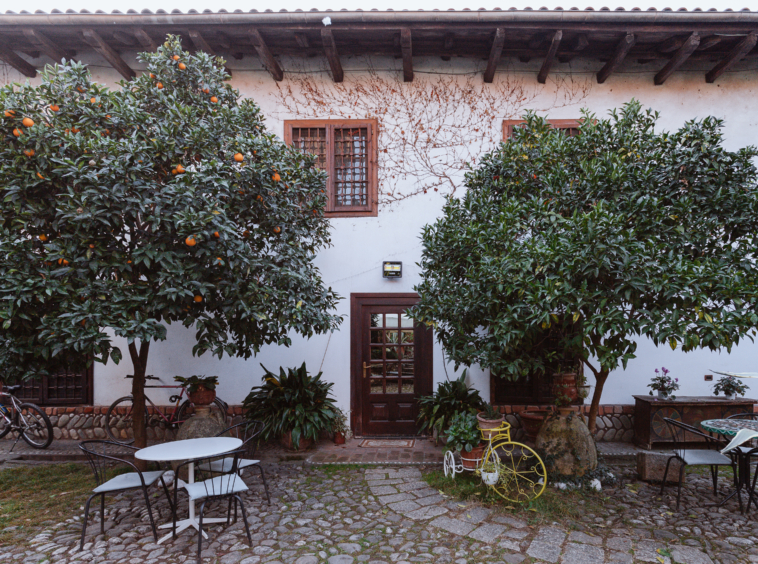Sali Shijaku’s Residence
Details
Updated on December 30, 2024 at 12:35 pmInformation
- Author: Unknown
- Year Built: Early 19th Century
Description
Located on Vildan Luarasi Street, no. 16, Sali Shijaku’s residence is a quintessential example of Tirana’s 19th-century residential architecture, featuring the characteristic “fire house” layout. This residence not only represents a high standard of traditional Albanian domestic architecture but also serves as a cultural monument, preserving and showcasing the city’s historical and artistic legacy.
Historical Context and Structure
Constructed in the first half of the 19th century, the residence exemplifies the traditional two-story rectangular plan typical of its era. Its design reflects the patriarchal family structure of the time, where the fire house served as the heart of the home.
The Fire House
The fire house is the central element of the residence and serves as both a functional and symbolic space:
- Height and Structure: It spans two stories in height and features an open ceiling, exposing wooden beams. This architectural choice emphasizes openness and utility.
- Functionality: The fire house was the primary living area where the family gathered, cooked, and where children often slept, reinforcing its role as the core of family life.
Upper Floor and Balcony (Mafil)
Access to the upper floor is provided by wooden stairs leading to a balcony known as the mafil. This balcony serves as a transitional space and a distinctive architectural feature, highlighting the hierarchical and patriarchal nature of traditional Albanian families.
Architectural Details
- Garden and Porches: Originally, the residence featured a garden and porches at the front, providing a welcoming and communal atmosphere. However, these were later enclosed to meet modern residential needs.
- Adobe Walls and Gate: The property is surrounded by thick adobe walls, creating a sense of privacy and security. The entrance is marked by large, two-story gates, which are typically covered with a roof to protect against the elements.
Current Use and Significance
Today, Sali Shijaku’s residence serves as a painting museum, showcasing works by “People’s Artist” Sali Shijaku and others. Its conversion into a museum not only preserves its architectural features but also enriches its cultural significance, making it a hub for art and history enthusiasts.
Cultural and Historical Importance
The residence is a vital link to Tirana’s architectural and cultural past. Its layout and features reflect traditional Albanian domestic life, emphasizing communal living and the patriarchal family structure. Its preservation as a cultural monument and museum ensures that this historical narrative remains accessible to future generations.
Legacy
Sali Shijaku’s residence is more than just a home; it is a living piece of Tirana’s history. By maintaining its traditional architecture and repurposing it as a space for art, it bridges the past and present, offering insights into Albania’s architectural heritage and cultural evolution.
Address
Open on Google Maps- City Tirana







